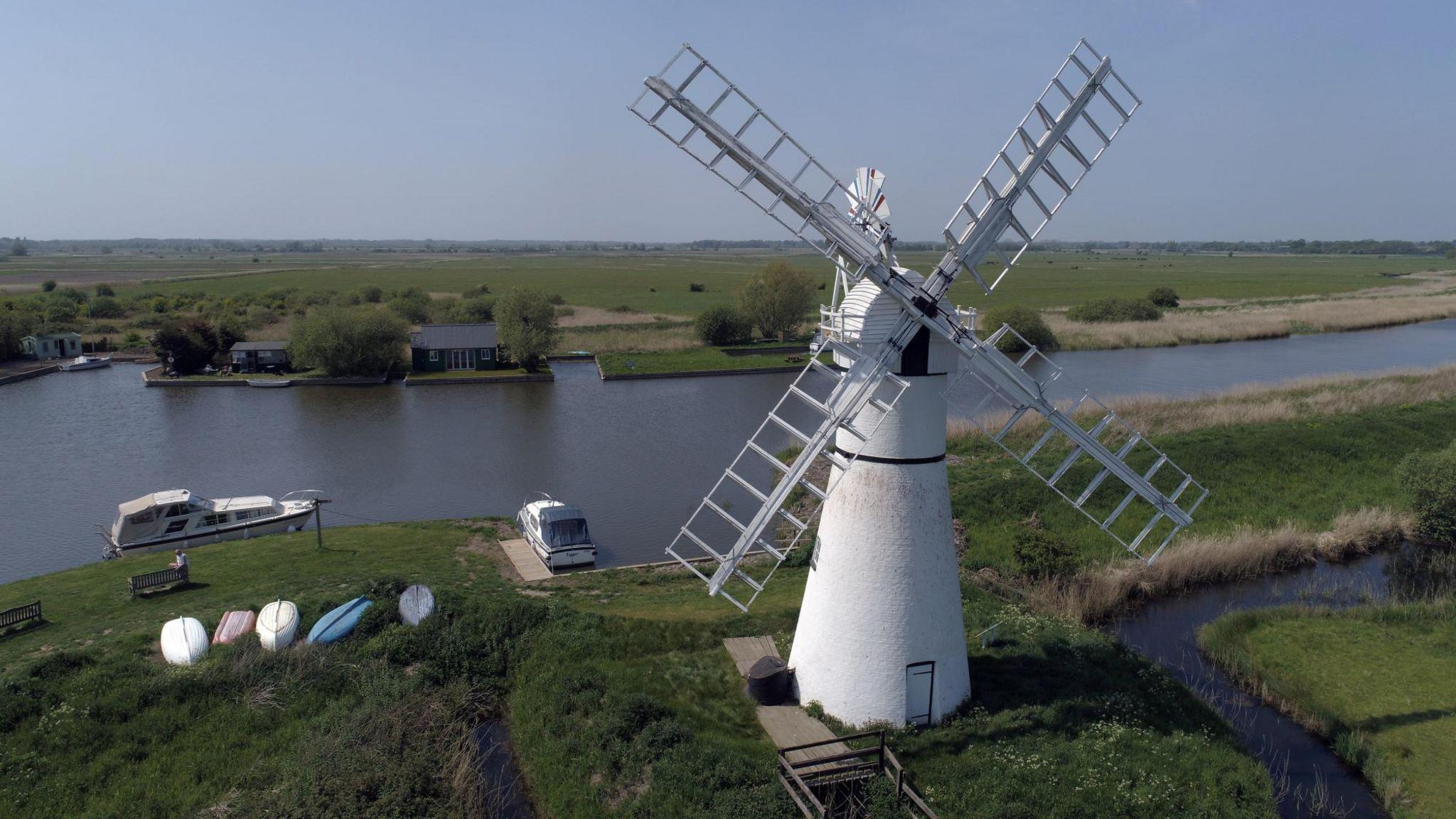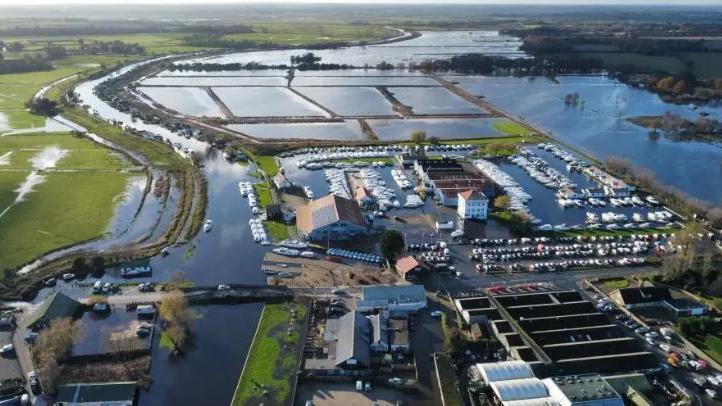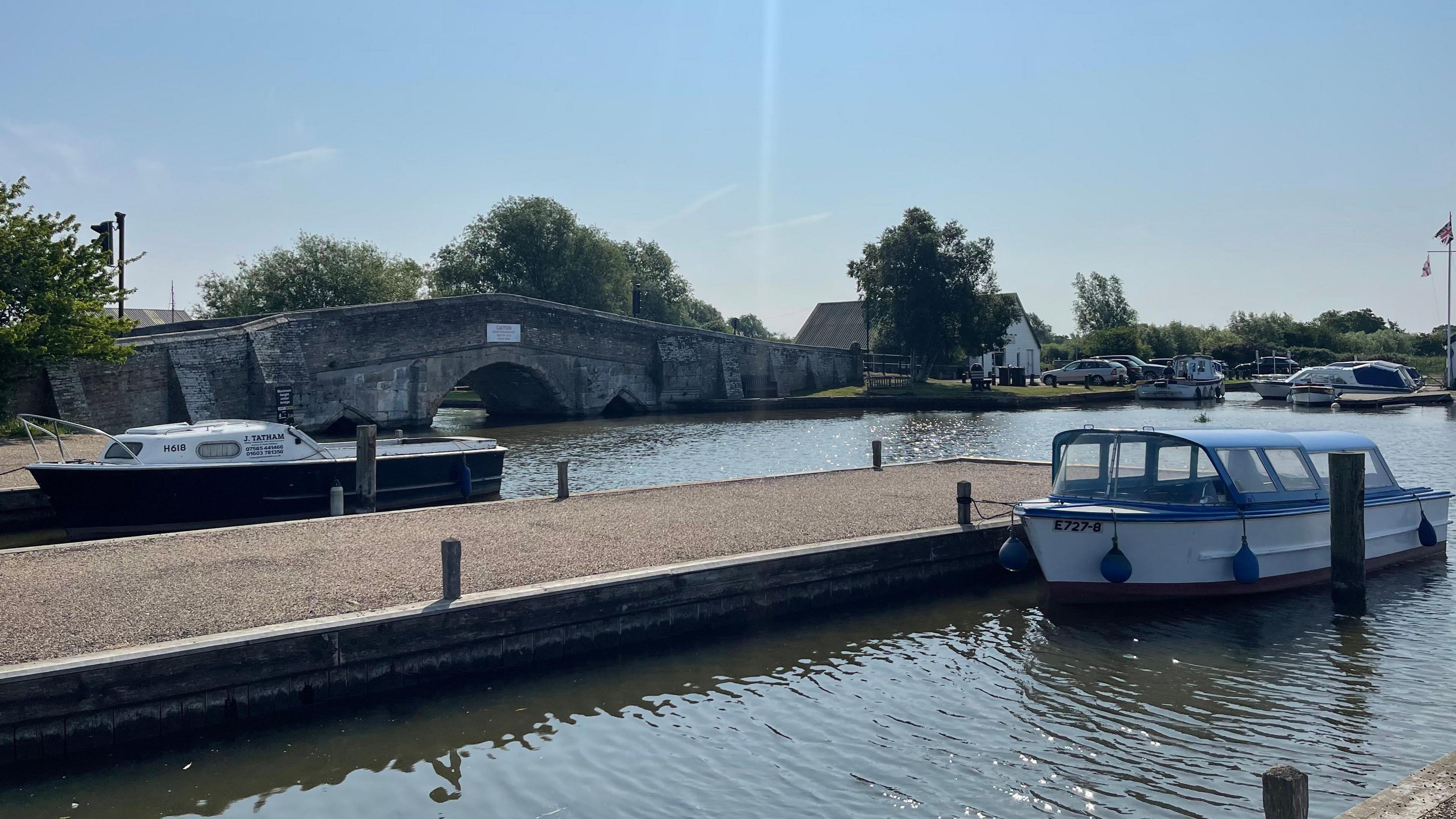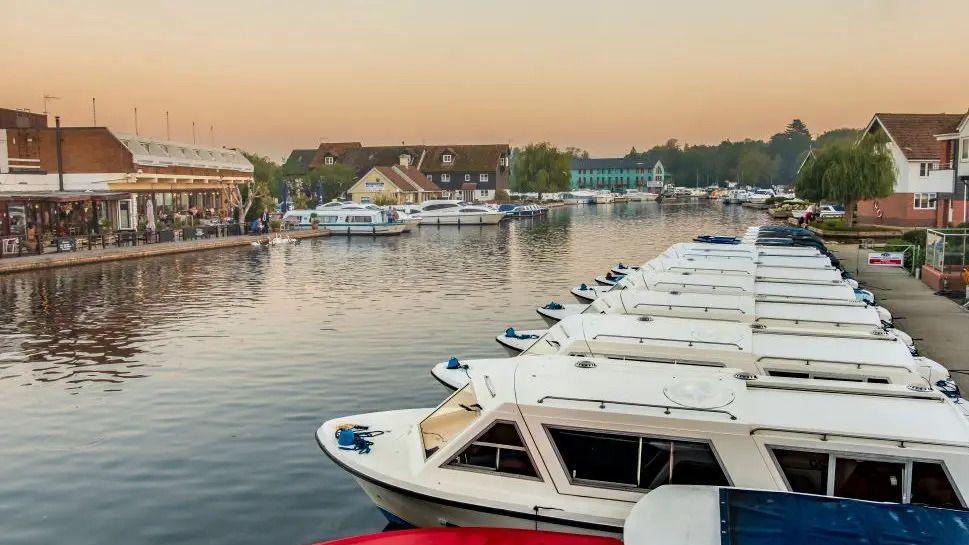Climate threat may return Broads to Roman landscape

Thurne Windmill on the banks of the River Thurne, Norfolk Broads
- Published
The outgoing boss of the Broads Authority has warned climate change is "biting hard" and could dramatically change the waterways.
Chief executive John Packham, who has overseen the management of the broads in Norfolk and Suffolk for some 25 years, was outlining the biggest challenges for his successor, with the threat of climate change among the most significant.
He said swathes of land will have to be given up to be used as floodplains, to protect homes in areas around Breydon Water and along the Waveney Valley from flooding.
The Lower Bure could be reclaimed to help absorb rising water levels from the encroaching North Sea and from rivers breaking their banks.

Outgoing Broads Authority chief executive John Packman warns of challenges for the waterways
Parts of the landscape, which Mr Packman said was already sinking, may again start to resemble the vast estuary it was 2,000 years ago, before rivers were rerouted, drainage channels dug and windmills built to pump out the water.
Over the next 100 years, sea levels were being predicted to rise by up to a metre, which would put much of the low-lying wetlands underwater.
"We cannot stop these changes happening. It is about how you adapt to it and manage the rate of change and mitigate the impact on the Broads system," he said.
"Climate change is already biting hard.
"We will have to give up areas of land so that when there are big flooding events, water has somewhere to go.
"There will be some things that will be similar to the Roman times."

Flooding in Potter Heigham in November 2023 affected homes and businesses surrounded by flood water
According to the Local Democracy Reporting Service, rising water levels on the Broads has seen repeated flooding affecting many riverside villages over recent winters.
Saline water - when sea water is forced into rivers by wind and tide conditions - has over the years killed thousands of fish.
Mr Packman suggested the best way to combat the threat was not through trying to resist or stop it, but to "make space for water".
He suggested the region had much to learn from the Netherlands, where communities were being protected by creating more wetland and flood plain to absorb rising water levels.

Over the next 100 years, sea levels were being predicted to rise by up to a metre
As well as climate change impact, Mr Packman warned funding challenges would prove increasingly tough.
The Broads Authority receives funding from the government to maintain the waterways but a steady decline in the number of people boating was leaving the authority with less income from toll fees to support its navigation maintenance.
Get in touch
Do you have a story suggestion for Norfolk?
Follow Norfolk news on BBC Sounds, Facebook, external, Instagram, external and X, external.
Related topics
- Published16 May

- Published29 November 2024

- Published28 October 2021
